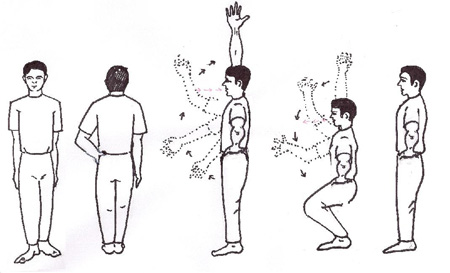Chinese Qigong to Promote Sleep
Chinese qigong involves posture / movements (also known as form or frame), breathing techniques and mental focus, which is practiced to integrate and cleanse the body, mind and spirit. Constant practice helps to promote health, prevent disease and develop personal potential. Through the use of specific postures, proper breathing and/or mental reframing, qi (vital energy) can flow freely throughout the entire body, reinforcing the sleep-wake cycle and encouraging a natural sleep. Our body likes routine. Qigong is ideal for training the mind to "switch off", and as a relaxing bedtime routine to help ease the transition between wakefulness and sleepiness.
 |
| Supreme Ultimate Fist (Tai ji quan) is the most popular form of Chinese qigong. |
There are different types of qigong to choose from, and also with numerous adaptations and versions. As the time required to attain results varies, sometimes a person requires only a short period of time to achieve his goal, while others may take several years. Certain techniques work for some people, while others do not. You may need to do a little research and experimentation to find what is best for you.
Protocol 1
The following is a relaxation technique to bring on sleep:
Lie on the bed casually, close the eyes and keep the mind empty and "not thinking". Take the midpoint between the eyebrows as the focal spot of your meditation, and give it your full attention. If disturbing thoughts intrude, just ignore them, continuously and firmly bring your mind back to the focal point. Gradually, the tension will disappear and a sinking feeling will lead you into sleep.
Protocol 2
This is another technique that lets the body to unwind and sleep better:
 |
Lay on your back with feet slightly apart, hands by the sides, and palms turned downward. |
 |
Look ahead for a while, then focus between the eyebrows, then slowly look down to the nose, then to the lower abdomen. |
 |
Close the eyes and mouth, raise the tongue against the hard palate, take deep breaths in and out through the nose. |
 |
While exhaling, imagine that the lower abdomen is filled with qi (vital energy), which spreads all through the body and finally release through the skin pores to the surroundings. |
 |
Take deep breaths 24 times. |
Protocol 3
This is suitable for all ages and is particularly effective for those with insomnia, general weakness, and hypertension.
Preparation: lie on your back, cup your palms under your belly button, put the left foot over the right foot. Raise the tongue against the hard palate, slightly open your eyes. Relax the whole body.
Breathing: take three deep abdominal breaths first, and then return to slow normal breathing. Inhale slowly to fill your lower belly first, and then fill your stomach area, followed by the chest and the lungs. Hold for a few seconds and begin to exhale. Empty the very bottom of your lungs first, then the middle and finally the top. Do the inhaling and exhaling in peaceful manner, and gradually extend the time of each breath.
Mental exercise: first, get rid of all stray thoughts and empty the mind first. Mentally repeat the thought of "I am carefree, I have a light-hearted mood, I look graceful, my body is floating, I am going to sleep."
Continue the breathing and mental exercises for 20-30 minutes, and then take the lower abdomen as the focal spot of your meditation until fall asleep.
Protocol 4
In Buddhist temples, between the constant reciting scriptures and studying, monks practice this to help refresh their minds and strengthen their bodies. This simple exercise is suitable for the mentally exhausted and those with chronic insomnia to practice in the morning.
 |
Stand still and place the right foot forward and kick the right heel with the left foot. |
 |
Put the left hand on the waist and with elbow bowing outward; the right arm hangs down naturally. |
 |
Keep the mouth closed, raise the tongue against the hard palate, open the eyes slightly, and then take deep breaths in and out through the nose. |
 |
Stand up straight, and clear your mind of everything and think only of the next movement. |
 |
Raise the right arm gradually while slowly inhale as deep as possible. |
 |
When the right arm is above the head, stretch out the fingers. |
 |
Gradually turn the right arm down and bend the knees, meanwhile, slowly exhale as much as possible. |
 |
Stand up and inhale slowly to the starting position; repeat the above eight times more. |
 |
Change to the other side and do again. |
The slower you move and the deeper you breathe the more relaxed and calmed you will become. It is said that proficient people can finish one sequence of movements in 1 minute.
 |
| Qigong practice for insomnia |
|